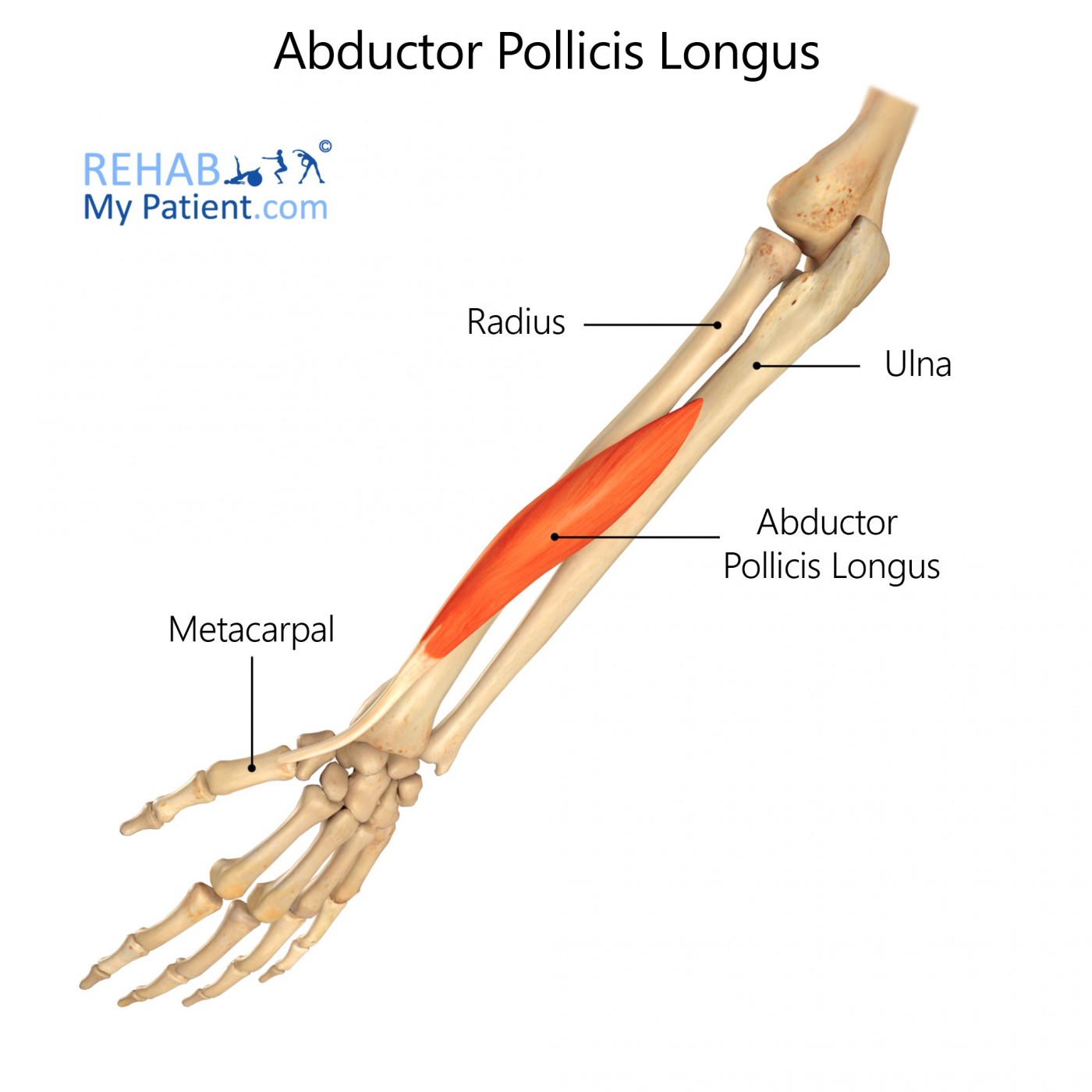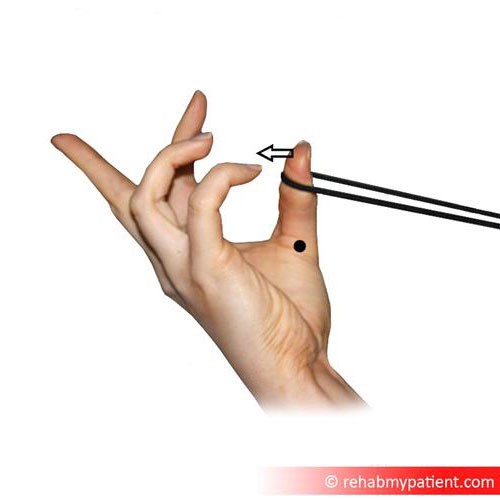Abductor Pollicis Longus (hand)
Opublikowano dnia 21st Jul 2020 / Opublikowano w: Ręka/Palce/Kciuk

General information
The abductor pollicis longus muscle is one of 20 muscles located in the human forearm.
Literal meaning
Long muscle which moves the thumb away from the midline of the hand.
Interesting information
Though the primary functions of the abductor pollicis longus are to abduct the thumb away from the palm, thumb rotation and thumb extension, the abductor pollicis longus also assists in abducting the wrist and flexing the hand.
Approximately 80% of people have an accessory (more than one) abductor pollicis longus.
To feel the abductor pollicis longus and the tendons connecting to it, try flexing your thumb towards the palm of your hand and feeling along the fleshy side of your hand below the thumb joint. There are actually three main muscles which control thumb movement: the abductor pollicis longus (APL), the extensor pollicis brevis (EPB) and the extensor pollicis longus (EPL).
Injury to the abductor pollicis longus can arise due to hand or wrist sprains, causing pain with certain wrist and thumb movements. Another possible cause for pain in the abductor pollicis longus is De Quervain’s tenosynovitis, a condition usually provoked by repetitive strain or overuse of the wrist and thumb. This causes the abductor pollicis longus and surrounding muscles and tendons to become inflamed, leading to pain. Treatment methods for pain can include applying ice, immobilisation of the thumb and wrist and anti-inflammatory medications. Surgery is rarely required but must be followed by rehabilitation to restore strength and flexibility.
Origin
Posterior surface of the ulna, the radioulnar interosseous membrane and the middle third posterior surface of the radius.
Insertion
Base of the palmar side of the first metacarpal bone.
Function
Abducts and extends and rotates the thumb, also abducts wrist.
Nerve supply
Posterior interosseous nerve.
Blood supply
Posterior interosseous artery.

Relevant research
Multiple variations in the number and nature of abductor pollicis longus muscles and tendons in humans have been observed. As many as nine abductor pollicis longus tendons have been found in a single human forearm. Knowledge of such anatomical variations is vital in determining which muscles and tendons are to be grafted or repaired in the event of hand trauma.
Multiple tendons of abductor pollicis longus. Published online February 23rd, 2010 © http://www.ijav.org Case Report International Journal of Anatomical Variations (2010) 3: 25-26
“Spare” or duplicate abductor pollicis longus tendons can actually be used as a grafting material for reconstructive procedures in patients with osteoarthritis or injuries to the tendons and ligaments of the hand.
Bravo, Elena; Barco, Raul; Bullón, Adrian (May 2010). "Anatomic Study of the Abductor Pollicis Longus: A Source for Grafting Material of the Hand". Clin Orthop Relat Res. 468 (5): 1305–1309.
Abductor pollicis longus exercises
One exercise which strengthens the abductor pollicis longus can be done using a rubber band. Loop a medium-sized rubber band over both your thumbs. Push against the band by extending one thumb upwards and away from your palm. Bring the raised thumb back down slowly. For optimal strengthening results, perform 15 repetitions of this exercise, three times per week.

Zapisać się
Zarejestruj się już teraz, aby skorzystać z bezpłatnego okresu próbnego!
Zacznij korzystać z Rehab My Patient już dziś i zrewolucjonizuj proces przepisywania ćwiczeń, aby zapewnić sobie skuteczną rehabilitację.
Rozpocznij 14-dniowy bezpłatny okres próbny